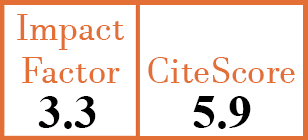Full Papers
Decreased levels of CCR3 in CD4+ lymphocytes of rheumatoid arthritis patients
V. Aloush, J. George, O. Elkayam, I. Wigler, S. Oren, M. Entin-Meer, S. Maysel-Auslender, J.N. Ablin
CER20
2010 Vol.28, N°4
PI 0462, PF 0467
Full Papers
Free to view
(click on article PDF icon to read the article)
PMID: 20659406 [PubMed]
Received: 07/11/2008
Accepted : 19/01/2010
In Press: 30/08/2010
Published: 30/08/2010
Abstract
OBJECTIVES:
To evaluate the expression of CCR3 receptors as well as CCR3 agonists, including eotaxin-2 and RANTES, among patients suffering from rheumatoid arthritis and healthy controls, as a possible pathogenetic mechanism in inflammatory joint disease.
METHODS:
Twenty-two patients and 13 healthy controls were recruited and clinically evaluated. CCR3 expression on CD4+ lymphocytes and mononuclear cells was evaluated by FACS analysis after staining with human CD4 APC (bioscience) and human CCR3 (CD193)PE. Levels of eotaxin-2 and RANTES were analysed by ELISA.
RESULTS:
A significant decrease was observed in the level of CD4+ cells expressing the CCR3 receptor in serum of RA patients (0.96±0.5) as compared with healthy controls (1.48±0.6) (p<0.05). A significant decrease in serum eotaxin-2 levels was evident among RA patients suffering from active disease, defined by a DAS-28 score above 5.5, compared with RA patients with lower activity scores (2.1±1.6 vs. 7.0±5.1; p=0.01). A significant decrease was evident in the number of CCR3 expressing Monocytes among RA patients treated with steroids and anti TNF-a medications as compared with RA patients not receiving such treatment.
CONCLUSIONS:
CCR3 is differentially expressed on inflammatory cells in RA, while eotaxin-2, a potent CCR3 agonist, is differentially expressed in active disease. Anti-inflammatory medications may down-regulate CCR3 expression in RA. The CCR3-CCR3 agonist pathway may thus have a pathogenic role in RA and may be a future target for novel treatment modalities.


